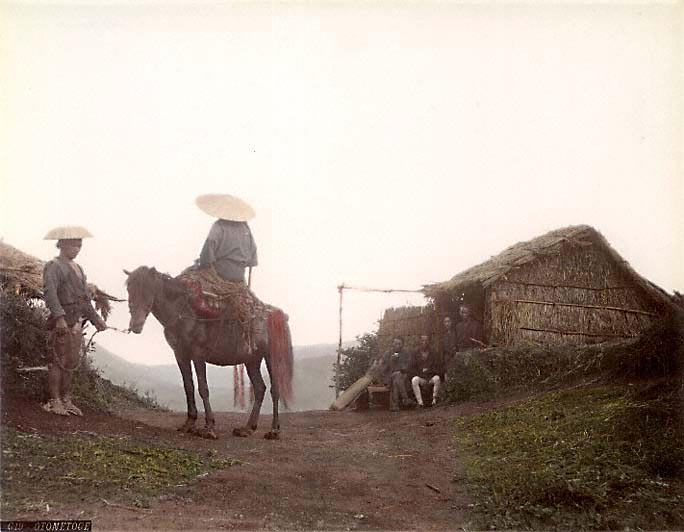Cross-cultural Camera: How Photography Helped Bridge East & West – American Museum of Photography Online Exhibition
|
|
|
| “Otonetoge” Tinted albumen print, circa 1880 There are two mountain passes in Japan named Otome-toge (Pass of the Maiden or Pass of the Virgin). One is located near Tsuwano in Shimane prefecture and is now the site of a Catholic chapel, marking a place of persecution where 36 Japanese Christians were killed between 1868 and 1871. This placid scene, however, was taken hundreds of miles away, in the city of Gotemba. The location is considered one of the three best places for viewing Mt. Fuji, although clouds and fog can sometimes obscure the famous mountain. (The spelling “Otonetoge” in the negative title strip appears to be a typo.) The photographer Adolfo Farsari was born in the town of Vicenza, then part of Austria-Hungary. An ardent opponent of slavery, he traveled to America in 1863, enlisting in the Union army as a cavalry soldier during the Civil War. He moved to Japan in 1873 and later entered the photography business in Yokohama. In the 1880s, he purchased the Japan Photographic Association from Baron von Stillfried — acquiring negatives made by the Baron as well as those made by Felice Beato two decades earlier. The exquisite naturalistic coloring of this photograph is exceptional. The British writer Rudyard Kipling noted this aspect of Farsari’s work in 1889 when he advised his readers,
At one time, Farsari employed forty colorists whom he trained in his own method of hand-tinting photographs. His business survived two disastrous fires in the 1880s, in which many earlier negatives were lost. He returned to Italy in 1890. |
 |
 |
|
| |
|
|
Domo Arrigato to Jim Cork for information on the two Oto-metoges!Kipling quotation and some biographical information courtesy Generoso d’Agnese, online at http://www.utopia-news.co.uk/e/jan2002/10.htm
Copyright © 2002, 2004 The American Photography Museum, Inc. All Rights Reserved.American Museum of Photography and the logo are Service Marks of The American Photography Museum, Inc. Web Design: Becker Information Group, LLC

